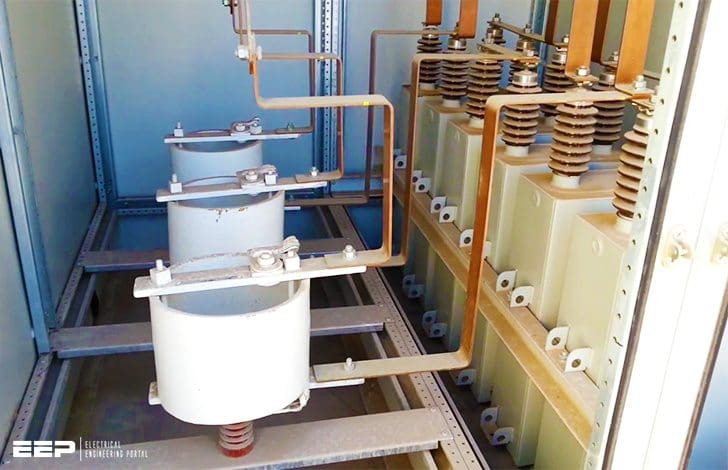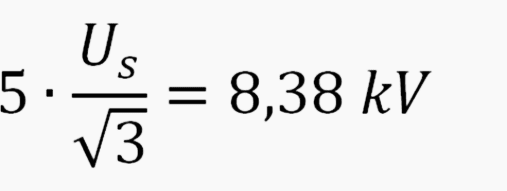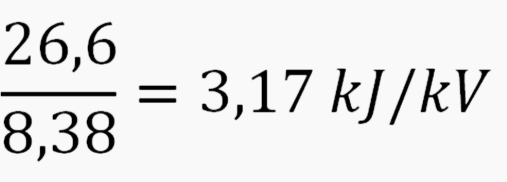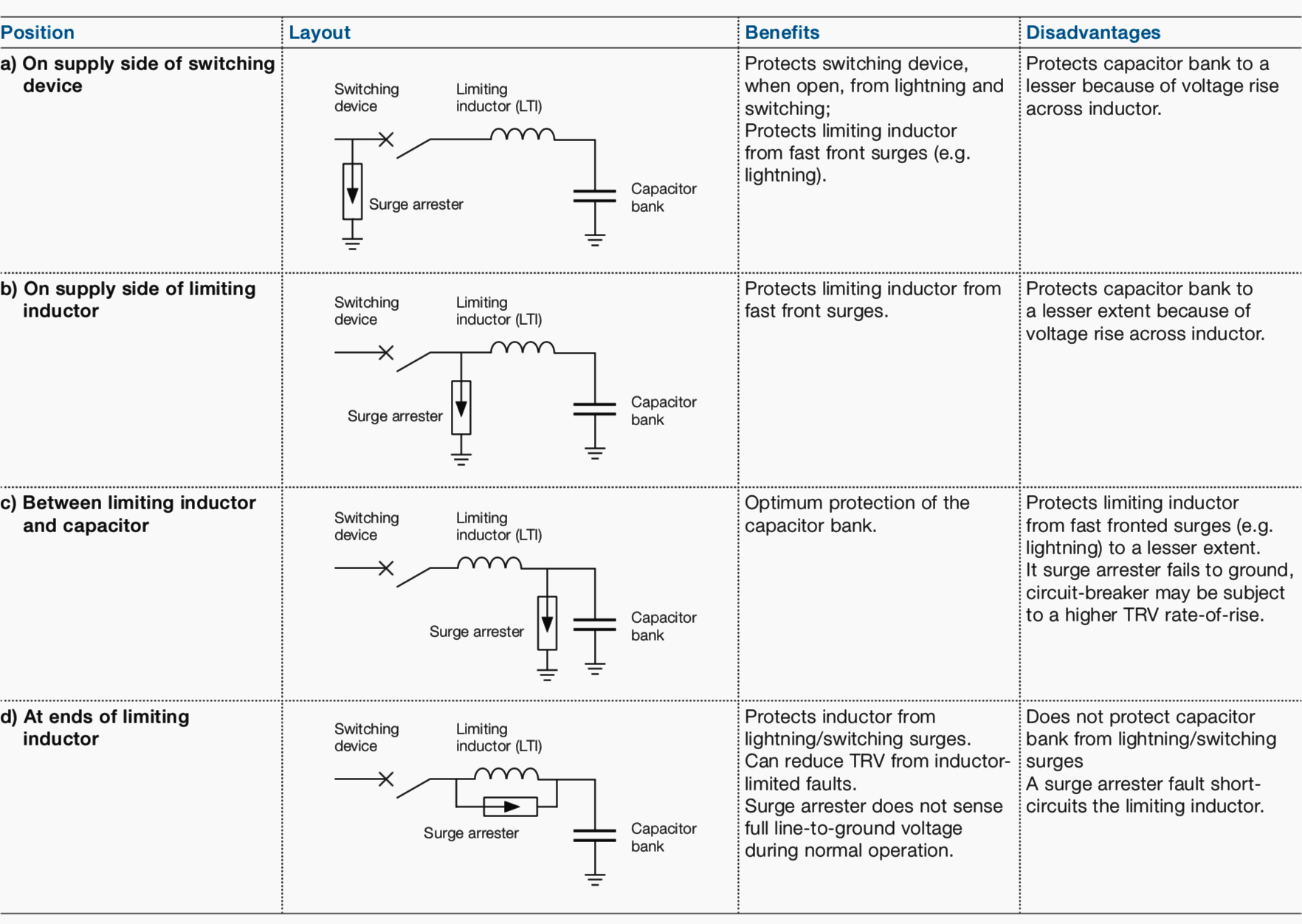Capacitor bank switching
The energy associated with re-striking due to capacitor bank switching must be assessed with the greatest care. Although rare, restriking can be a challenging task, especially for surge arresters installed near the capacitor banks.

In actual fact, surge arresters installed even further away, including low voltage ones, can be affected in the case of multiple restriking events. The energy that affects the surge arrester depends on the capacitance of the capacitor bank owing to the charge stored in the bank itself.
Suppos that the transient overvoltage due to circuit breaker restriking during the opening operation of a capacitor bank reaches 3 p.u. and that the discharge voltage of a typical surge arrester installed on the bank or in its immediate vicinity is about 2 p.u..
The suggestion provided by the Standard is to estimate the energy discharged by a surge arrester (energy in surge arrester in kJ) as depending on the size of the capacitor bank, as described below:
Esa (kJ) = 13.3 × MVAr per phase at 60 Hz = 16.0 × MVAr per phase at 50 Hz
For example, considering the previously described 60 Hz system at Us = 13.8 kV with 6 MVAr three-phase capacitor bank, the result is:
Energy in surge arrester (kJ) = 13.3 · 6/3 = 26.6 kJ
thus, if the maximum continuous operating voltage Uc (according to IEC, MCOV or IEEE) that can be applied to the terminals of the surge arrester without impairing its characteristics in any way is:

The result is:

This means that there will be no problems from an energy aspect if an ABB MWD surge arrester is installed, since its energy has been tested in accordance with Standard IEC 60099-4 and is 5.5 kJ/kV.
Table 1 – Limiting inductor positions and relative benefits / disadvantages

Surge arresters can be installed in different positions depending on the switching device and limiting inductor. These positions are listed below:
- On the supply side of the switching device
- On the supply side of the limiting inductor
- Between the limiting inductor and capacitor
- At the ends of the limiting inductor
The benefits and disadvantages of each installation, which must be preceded by research for the purpose of coordinating the insulation of the system, are outlined in above table.
| Title: | Medium Voltage Capacitor Switching Guide – ABB |
| Format: | |
| Size: | 2.2 MB |
| Pages: | 52 |
| Download: | Right here | Video Courses | Membership | Download Updates |


